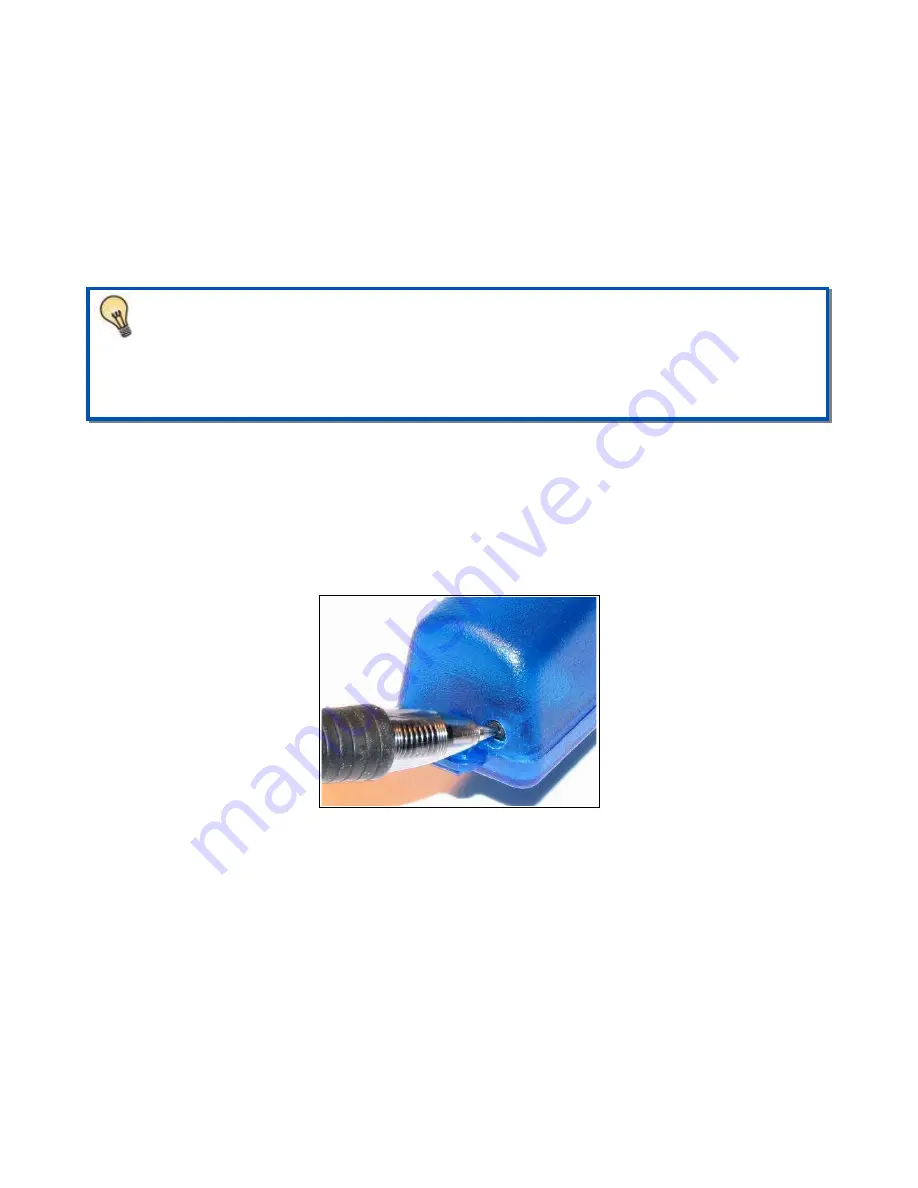
Step 3:
If necessary, initialize the RTC clock by creating a time.txt file (see section 2.4). Once
the time.txt file is saved, immediately unplug the logger to start the initialization
process. The logger will load the time.txt file, initialize the clock, and delete the time.txt
file. Initializing the RTC ensures the data files include the correct year, month, and day
and that the data samples can be correlated to a specific date and time.
Step 4:
After removing from the USB port, attach the X16-5 logger to the target object. The
logger is small and light weight so double-sided tape, Velcro, or a spot of cyanoacrylate
glue are sufficient methods of attachment.
Step 5:
Press the on/off button located at the rear of the enclosure to initiate data recording, (see
Figure 8). Logging will start about 3-5 seconds after pressing the button. The red LED
will blink as the configuration file is accessed. If the time.txt file is present, the RTC is
initialized with the time written in the file. Then, the blue LED will begin to blink at a 1
second interval indicating the system is operating. The red LED will blink periodically
as data is written to the microSD card.
Step 6:
To stop recording, press and hold the button for about 3 seconds. The red and blue
LEDs will begin to blink rapidly for 2 seconds and then turn off. Release the button and
the X16-5 turns off. Pressing the button again restarts the logger and data is recorded to
a new file.
Step 7:
Plug the logger into a PC and allow the logger to mount as a USB drive. The data files
will appear in the “GCDC” directory.
Step 8:
The data recorded to the files must be converted to determine acceleration in “g” units.
Divide the Ax, Ay, Az columns by 2048 to determine g units. See section 3.3 for a
complete discussion of data conversion.
Gulf Coast Data Concepts
Page 6
X16-5, Rev New
Figure 8: Starting the X16-5
The X16-5 is small and light weight so attachment methods do not need to be substantial.
Double-sided tape, a spot of cyanoacrylate glue (contact cement), zip-ties, magnetic base,
or adhesive putty are example methods of attachment. These methods do not cause
adverse signal attenuation considering the relatively low frequency bandwidth of the X16-5
logger. Command Poster Adhesive strips by 3M offer excellent temporary attachment of
the logger to most surfaces.








































